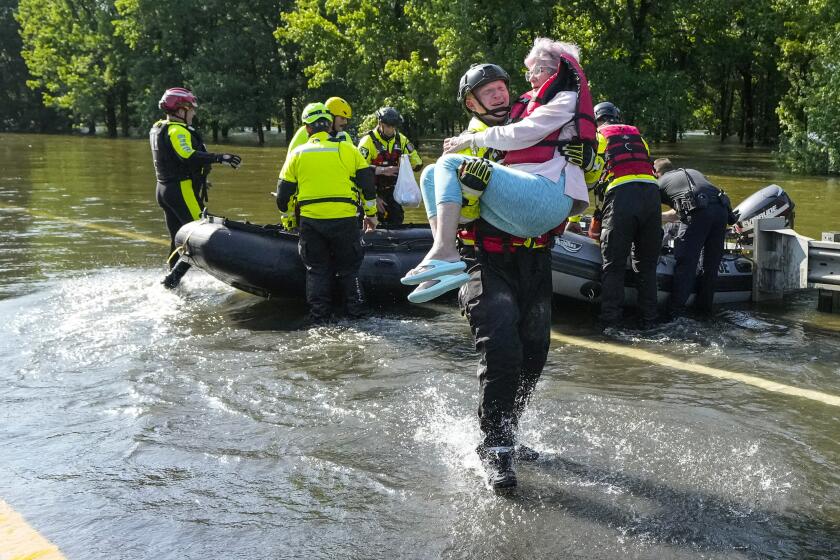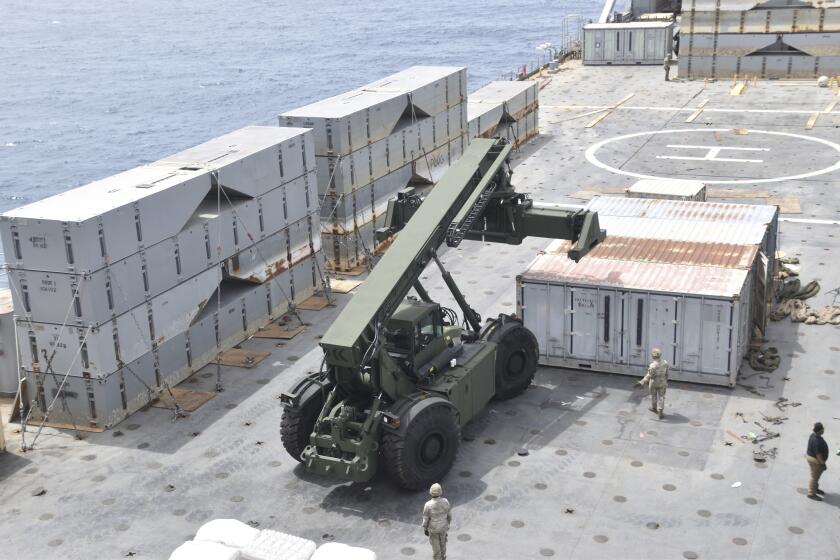A “war zone” in twisters’ path
Tornadoes roared through central Florida before dawn Friday, tearing roofs off houses, flattening a church built to withstand hurricanes, and sucking people from their beds into lakes and piles of debris. At least 19 died in the flash of destruction that hit while they slept.
While thunderstorms and the tornadoes they spawn are common throughout Florida year-round, the blast that gathered over the northern Gulf of Mexico late Thursday and swept across the state between 3 and 4 a.m. was the deadliest in nearly a decade.
Gov. Charlie Crist declared a state of emergency Friday for the four counties hardest hit and toured the shattered communities of Lady Lake and Paisley in Lake County, where all the known fatalities occurred.
Most people in the tornadoes’ path had gone to bed before severe-weather warnings were issued.
“When people are sleeping, they are most vulnerable to weather and disaster. It’s like having a house fire when you don’t have a smoke detector,” said Walt Zaleski, warning coordinator meteorologist for the National Weather Service’s regional headquarters in Fort Worth.
The weather service had activated its regional alert system ahead of the tornadoes, Zaleski said, and if all households had been equipped with radio-alarm units costing as little as $20, their occupants could have awoken in time and sought safer places to ride out the storm.
The devices, designed by disaster planners, blare a warning sound when they receive a radio-transmitted signal, alerting residents in a threatened area to tune in for details. The Department of Homeland Security also uses the devices to announce other dangers, such as hazardous material spills, criminal threats or terrorist attacks, Zaleski said.
Vern and Louedna Huber told reporters how they were awakened by their weather radio alarm at 3:30 a.m., only minutes before the tornado hit. It was enough time to hunker down under couch pillows in an interior hallway of their Lake Mack home.
A short distance away, another Lake Mack couple drowned after the tornado blew them through the toppled bedroom wall of their mobile home. The couple’s dog found the bodies, neighbor Bernadette Fields told reporters.
People sleeping in upper stories of houses are especially at risk, Zaleski said. The weather service recommends taking shelter in basements -- a rarity in waterlogged Florida -- or the innermost area of a home to “put as many walls as possible between you and the outside wind,” he said.
The tornadoes tore across the state in an hour, touching down to churn an erratic path of destruction. Moving at the speed of a runaway train, the winds ripped homes apart in a 20-square-mile swath of Lake County and plowed up a 300-yard corridor of Volusia County, littering the territory with tangles of aluminum siding, heaps of broken wood and windows, and clumps of pink, rain-soaked insulation.
Search dogs scoured the wreckage for others missing from the shattered mobile home parks and retirement communities that dot the lakes area north of Orlando.
Twisters overturned at least five vehicles on Interstate 4 and dozens of parked cars and buses. A semi-trailer was hurled into another large truck on the major east-west highway’s New Smyrna Beach exit, injuring and trapping one driver, said Florida Highway Patrol spokeswoman Kim Miller.
Power was knocked out to 44,000 homes, but Progress Energy and Florida Power & Light had service restored to all but about 8,000 by nightfall.
Crist, tackling his first natural disaster since taking office less than a month ago, said he had called President Bush and federal emergency officials to urge speedy delivery of aid for the hundreds left homeless and in need of crisis counseling, debris removal and reconstruction loans.
“It looked like a bomb went off on some of these homes and it breaks your heart to see that,” the governor, visibly moved by the scenes of destruction, told reporters after touring the shattered shores of Lake Mack near Paisley.
Sen. Bill Nelson, a Democrat who grew up just southeast of the afflicted region, accompanied the governor and other state officials on a helicopter tour to assess relief needs. He described the scene as “like a total war zone “ and recalled seeing, as the chopper lifted off from one lightning visit, a fawn with a broken rear leg dangling as it leapt into underbrush.
At the Lady Lake Church of God, Pastor Larry Lynn stood awestruck amid the ruins of his Pentecostal church, comforting parishioners and vowing to hold services Sunday even if they have to be held in the open. The church had been built to withstand 150 mph winds -- a Category 4 hurricane, he said.
Friday’s storm was the deadliest since the record destruction of February 1998, when five tornadoes ripped through the same central corridor, killing 42 and leaving thousands homeless.
More to Read
Start your day right
Sign up for Essential California for news, features and recommendations from the L.A. Times and beyond in your inbox six days a week.
You may occasionally receive promotional content from the Los Angeles Times.







